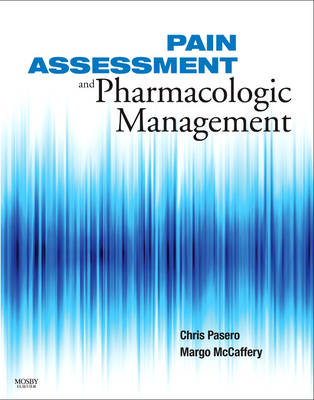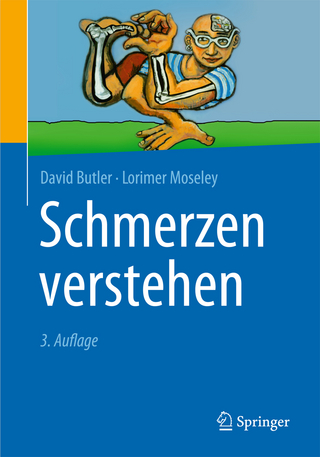
Pain Assessment and Pharmacologic Management
Mosby (Verlag)
978-0-323-05696-0 (ISBN)
- Titel erscheint in neuer Auflage
- Artikel merken
Pain Assessment and Pharmacologic Management, by highly renowned authors Chris Pasero and Margo McCaffery, is destined to become the definitive resource in pain management in adults. It provides numerous reproducible tables, boxes, and figures that can be used in clinical practice, and emphasizes the benefits of a multimodal analgesic approach throughout. In addition, Patient Medication Information forms for the most commonly used medications in each analgesic group can be copied and given to patients. This title is an excellent resource for nurses to become certified in pain management.
Presents best practices and evidence-based guidelines for assessing and managing pain most effectively with the latest medications and drug regimens.
Features detailed, step-by-step guidance on effective pain assessment to help nurses appropriately evaluate pain for each patient during routine assessments.
Provides reproducible tables, boxes, and figures that can be used in clinical practice.
Contains Patient Medication Information forms for the most commonly used medications in each analgesic group, to be copied and given to patients.
Offers the authors' world-renowned expertise in five sections:
Underlying Mechanisms of Pain and the Pathophysiology of Neuropathic Pain includes figures that clearly illustrate nociception and classification of pain by inferred pathology.
Assessment includes tools to assess patients who can report their pain as well as those who are nonverbal, such as the cognitively impaired and critically ill patients. Several pain-rating scales are translated in over 20 languages.
Nonnopioids includes indications for using acetaminophen or NSAIDs, and the prevention and treatment of adverse effects.
Opioids includes guidelines for opioid drug selection and routes of administration, and the prevention and treatment of adverse effects.
Adjuvant Analgesics presents different types of adjuvant analgesics for a variety of pain types, including persistent (chronic) pain, acute pain, neuropathic pain, and bone pain. Prevention and treatment of adverse effects is also covered.
Includes helpful Appendices that provide website resources and suggestions for the use of opioid agreements and for incorporating pain documentation into the electronic medical record.
Covers patients from young adults to frail older adults.
Provides evidence-based, practical guidance on planning and implementing pain management in accordance with current TJC guidelines and best practices.
Includes illustrations to clarify concepts and processes such as the mechanisms of action for pain medications.
Features spiral binding to facilitate quick reference.
Section I: Underlying Mechanisms of Pain Section II: Assessment Introduction 1. Underlying Complexities of Pain Assessment 2. Misconceptions That Hamper Assessment and Treatment of Patients Who Report Pain 3. Assessment Tools for Patients 4. Other Challenges in Pain Assessment Conclusion References Section III: Nonopioid Analgesics Introduction 5. Indications for Administration of Acetaminophen or NSAIDs 6. Adverse Effects of Acetaminophen and NSAIDs 7. Individualizing the Selection of Nonopioid Analgesics 8. Perioperative Nonopioid Use 9. Nonprescription Nonopioids 10. Acute Overdose Conclusion References Section IV: Opioid Analgesics Introduction 11. Physiology and Pharmacology of Opioid Analgesics 12. Key Concepts in Analgesic Therapy 13. Guidelines for Opioid Drug Selection 14. Guidelines for Selection of Routes of Opioid Administration 15. Intraspinal Analgesia (Epidural and Intrathecal) 16. Initiating Opioid Therapy 17. IV Patient-Controlled Analgesia 18. Switching to another Opioid or Route of Administration 19. Management of Opioid-Induced Adverse Effects 20. Unwarranted Withholding of Opioids Conclusion References Section 5: Adjuvant Analgesics Introduction 21. General Considerations in the Use of Adjuvant Analgesics 22. Multipurpose Adjuvant Analgesics 23. Adjuvant Analgesics for Persistent (Chronic) Neuropathic Pain 24. Topical Analgesics for Persistent (Chronic) Pain 25. Adjuvant Analgesics for Musculoskeletal Pain 26. Adjuvant Analgesics for Postoperative and Other Acute Pain 27. Adjuvant Agends for Goal-Directed Sedation in the Critically Ill and Procedural Sedation 28. Local Anesthetics for Procedural Pain 29. Adjuvant Analgesics for Persistent (Chronic) Bone Pain 30. Adjuvant Analgesics for Malignant Bowel Obstruction 31. Adjuvants Less Often Used Conclusion References Appendix A: Pain Resources on the Internet Appendix B: Opioid Agreements Appendix C: Use of Electronic Medical Records in Pain Management Appendix D: Terminology
| Erscheint lt. Verlag | 17.9.2010 |
|---|---|
| Zusatzinfo | Approx. 300 illustrations; Illustrations |
| Verlagsort | St Louis |
| Sprache | englisch |
| Maße | 216 x 276 mm |
| Gewicht | 1830 g |
| Themenwelt | Medizin / Pharmazie ► Medizinische Fachgebiete ► Schmerztherapie |
| Medizin / Pharmazie ► Pflege | |
| ISBN-10 | 0-323-05696-2 / 0323056962 |
| ISBN-13 | 978-0-323-05696-0 / 9780323056960 |
| Zustand | Neuware |
| Haben Sie eine Frage zum Produkt? |
aus dem Bereich



